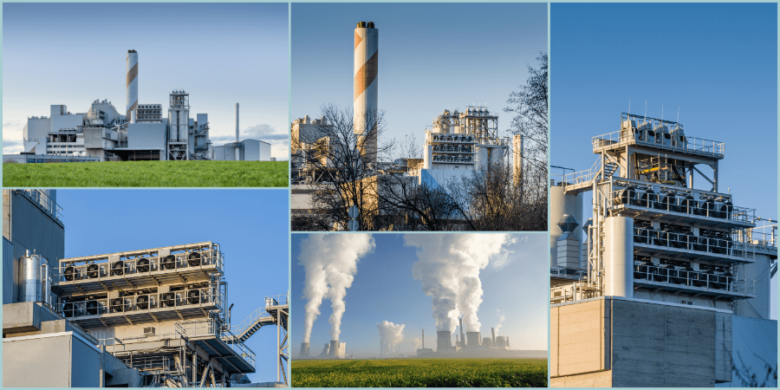Addressing climate change remains among the greatest concerns that humanity faces, and leaving whatever action to address it threatens these ecosystems and economies with greenhouse gases. Even though there are renewable and long-term sources of energy such as wind and solar, it is true that many sectors still use fossil fuels. Here is where carbon capture technology (CCT) comes on board in assisting to slow down and fight the ongoing global environmental disaster.
CCT refers to a variety of techniques that aim to capture carbon dioxide (CO2) emitted at the source from the atmosphere and sequestrate or safely utilize them. This blog will examine copper’s penetration, what it is, how it operates, advantages and cons, and where it fits in the quest to control the global climate change phenomenon.
Science Behind Carbon Capture:
Simply speaking, carbon capture is a technology that is developed to reduce the amount of CO2 in the atmosphere, hence reducing the greenhouse effect. It is worth noting that the end goal can be achieved through various means spread across different levels.
Capturing Carbon from Industrial Sources:
CCT facilitates passive integration of carbon sequestration technologies into the industries mentioned above, such as power plants, cement works, or steel plants, which are associated with higher emissions of CO2. In this instance, carbon dioxide emissions are captured at the so-called “point source” of where carbon is emitted, using one of the three methods:
- Pre-Combustion Capture: In pre-combustion capture, CO2 is separated from fuel gas before combustion takes place.
- Post-Combustion Capture: In the post-combustion phase, the carbon dioxide is captured once fossil fuels have been burnt.
- Oxy-fuel Combustion: This technique involves the burning of fuels in a purged oxygen environment. This results in a mineralised stream of CO2, which can be easily extracted. Methods of Carbon Capture
- Direct Air Capture: While the point-source technologies consider and address the emissions from the vicinity of industrial plants over a certain radius, Direct Air Capture (DAC) methods deal with carbon dioxide in the atmosphere directly. In a process called DAC, large amounts of air are sucked through several chemical filters, which extract carbon dioxide. The extracted carbon dioxide is then trapped in the ground forever or used for other processes, like creating synthetic fuels.
Storing or repurposing captured carbon:
This carbon dioxide is in a form, and one either has to do two things:
1. Do nothing and let carbon dioxide be stored somewhere away for long periods, or
2. Do something interesting with carbon dioxide or an interesting application where carbon dioxide can be put to use.
This encompasses storing in geological structures like depleted oil and gas fields, which is what’s called carbon storage. This, in a longer variation, is termed Carbon Capture and Storage (or CCS).
Or create new products or building materials, fuels, or even new materials such as carbon fiber. When active carbon farming strategies capture carbon as well, this approach is termed Carbon Capture, Utilization, and Storage (or CCUS).
Current State and Trends:
The current state of carbon capture technology across the world and its inevitable future development potential.
Norway’s Sleipner Project: Operational since 1996, Sleipner injects and stores CO2 from natural gas into underwater sandstone.
Canada’s Quest Facility: Integrated into oil sands processing, this project has already stored over 6 million tons of CO2 since the start of the company.
Climeworks in Switzerland: Climeworks has several plants with DAC technology, which is able to directly extract CO2 from the air.
From the year 1996 to date, carbon capture technology has been developing across the world, and as such, it has already been integrated into several works ranging from the oil industry as seen in Canada to mining in the case of Norway. As such, scaling up carbon mining technology is feasible to start on a small scale and progress to larger acts.
On a policy level, global collaboration is gaining steam. Incentives like the United States’ 45Q tax credit for permanent carbon storage and the European Union’s investments under the European Green Deal are significant milestones, providing more government support to scale CCT innovations.
Environmental and Economic Benefits:
The scope of positive outcomes from the application of carbon capture technology goes beyond only reduction of emissions of greenhouse gases.
Environmental Benefits
The first effect of CCT is the decrease of CO2 in the atmosphere, which contributes to global warming; therefore, it can be said that CCT has an immediate impact on climate change. While the cement and steel industries are often regarded as major contributors to greenhouse gas emissions, they can alter this scenario via this technology and achieve net-zero objectives.
Furthermore, carbon utilization projects can be regarded as a strategy for converting CO2 into useful products, which helps to move towards a circular economy that focuses on sustainability.
Economic Benefits
Investment in CCT presents sizable economic opportunities as well. It boosts investment in the developing markets of green technologies, creates jobs, and ensures that businesses can reduce carbon. The International Energy Agency (IEA) and other organizations’ reports suggest that the lifting of the carbon capture capacity could result in the creation of engineering, manufacturing, operational, and science and technology jobs in the thousands.
Barriers and Constraints:
Carbon capture technology sounds promising, but there are barriers. Overcoming these barriers could affect the role carbon capture could play in reducing climate change.
High Costs Anger the Population
Price always seems to be the first barrier towards the full utilization of any innovation, including the carbon capture plants—approximately $100-$150 is required per ton of carbon dioxide subjected to the process. Much of the additional cost is incurred due to the required transportation and storage infrastructure as well.
Energy Requirements
A carbon capture system should not be mistaken for easy work, for it is one of the most complex inventions, and it consumes a lot of energy when it is in operation. That implies that there is a chance that other technologies would be neglecting other technologies that might be able to make use of alternate energy resources. Wind or solar energy can also work with these systems.
Limited Market Policy Availability
The regulatory framework is different in various places, and hence the universal implementation is slow despite the existence of affirmative government regulations in the market. People are also not aware of the existence of financial benefits that can make them more interested in the idea.
Storage Risks
Layered geological formations naturally prevent carbon dioxide emissions from leaking into the atmosphere, and even if hydrocarbons are injected underground, the chances of them escaping into the atmosphere are very slim, although a proper safety system should be established first.
Conclusion:
Carbon capture and storage technologies are among the most effective and advanced tools that can be used in the war against climate change. Today, gas emissions that would have gone into the atmosphere would be curbed, and so the transition to renewable energy sources as well as the building of a sustainable future would be enhanced. But it will only be so when there is requisite cooperation between governments, industries, and the people.
It will also be possible to achieve significant global emission reductions and, therefore, support all initiatives in the area of carbon capture through steadfast commitment, grounded investment, and transformative novel ideas.
FAQs:
1. How is carbon capture distinct from carbon offsetting?
To begin with, some carbon emissions are captured and stored physically prior to or after releasing any carbon dioxide into the environment; that is carbon emissions, one annoying problem the planet faces today. Meanwhile, carbon offsetting is done to counter emissions through investing in green energy projects or tree planting activities that reduce carbon in other regions of the earth.
2. In your opinion, how efficient is the technology for carbon capture in mitigating the effects of global warming?
Because of the vast scale of carbon dioxide emissions worldwide and the technological, political, and social barriers to achieving this in the future, capturing carbon dioxide on a global scale alone will never be sufficient to meet the emission targets set by those in power, but it is regarded as an important weapon in the fight against climate change as it has the ability to prevent up to 90% of carbon emissions from key sources from entering the atmosphere, easing climate change issues in the process.
3. Is there a downside to implementing initiatives surrounding carbon capture?
The risks are indeed relatively low, but the spatial arrangement of reservoirs and monitoring them from time to time helps avoid these issues absolutely. Regarding other potential worries, the current concentration of academics researching CCS facilities believes that such long-term abortion places are safe if used properly.
4. What are the long-term prospects of carbon capture-related technologies?
The predictions can be defined as relatively good, especially given the large trends towards investment in its research, development, and commercialisation as well. There are efforts to develop technology that will focus on the reduction of cost, improvement of efficiency, and tailoring to other types of industries. With stronger and more integrated policies, carbon capture can be predicted to turn out to be a prominent solution in the decarbonization of businesses within a span of 10 years.
5. In what way can the masses and corporations promote carbon capture actions?
Masses can endorse and support carbon capture policies and businesses that conform to the said aims. On the same note, corporations may employ carbon capture systems, provide development resources, or partner with companies that specialize in CCT development and implementation to manage their emissions.




